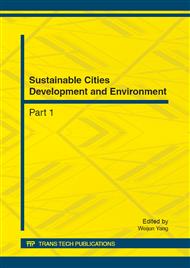p.430
p.437
p.441
p.445
p.449
p.455
p.460
p.466
p.470
A Study on Sustainable House Design in Lanyu
Abstract:
Lanyu (Orchid Island) lies off the southeast coast of Taiwan. The island has possessed abundant ecological resources and unique precious aboriginal culture. The Tao tribe is the native resident in the island and the below-ground house is one of its traditional cultures. This research tries to establish an assessing framework for sustainable house design in Lanyu by applying the concepts of green architecture and the languages of its traditional architecture. This research first, through literature reviews and expert interviews, determines the criteria and sub-criteria to be used in the initial assessing framework. Then, through expert questionnaires, the Delphi method is used to finalize the assessing framework. Finally, the Analytic Hierarchical Process is used to identify the relative weights of criteria and sub-criteria and then obtain the priority weights of sub-criteria. The below-ground house sub-criterion has highest priority weight and should be used in the sustainable house design. Based on the obtained sub-criteria, an exemplary design case is presented.
Info:
Periodical:
Pages:
449-454
Citation:
Online since:
October 2012
Authors:
Price:
Сopyright:
© 2012 Trans Tech Publications Ltd. All Rights Reserved
Share:
Citation:


